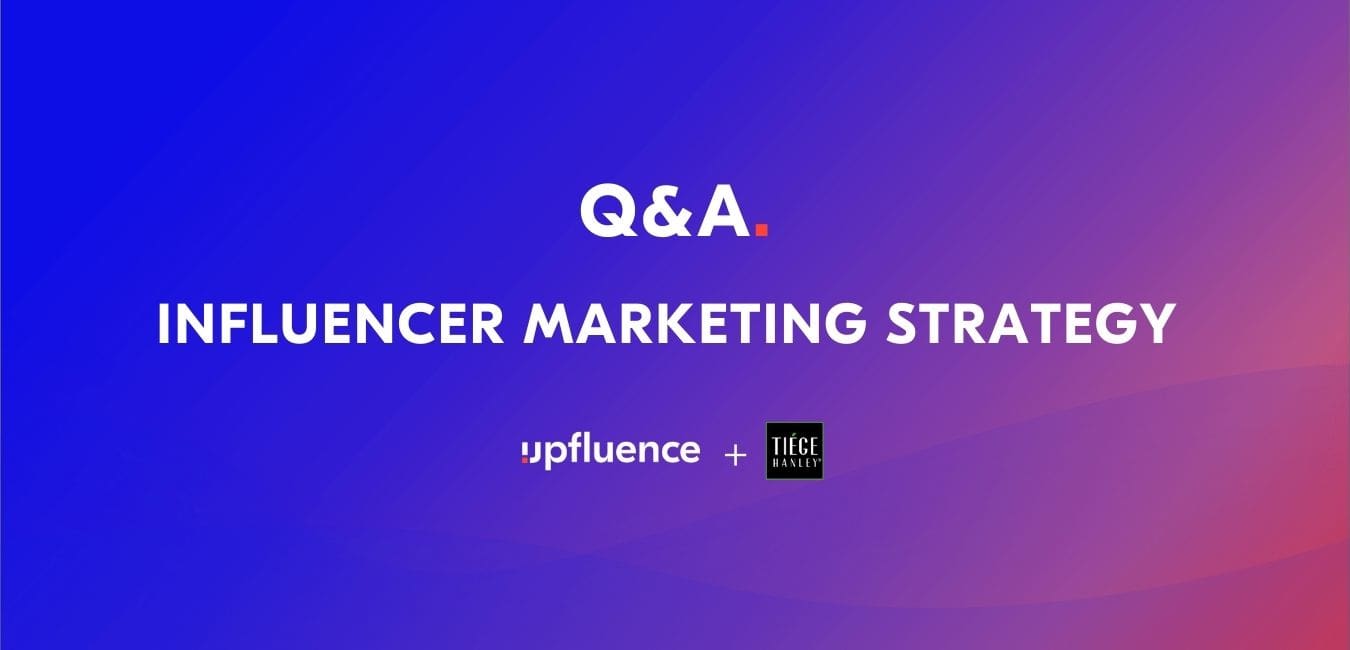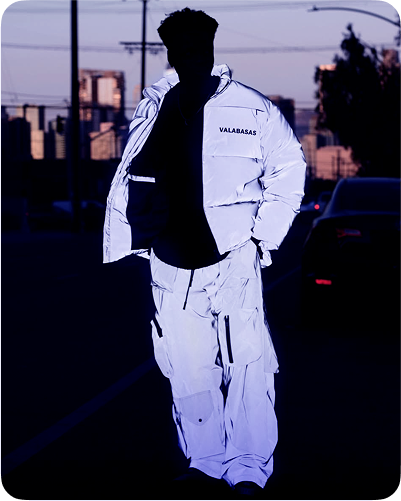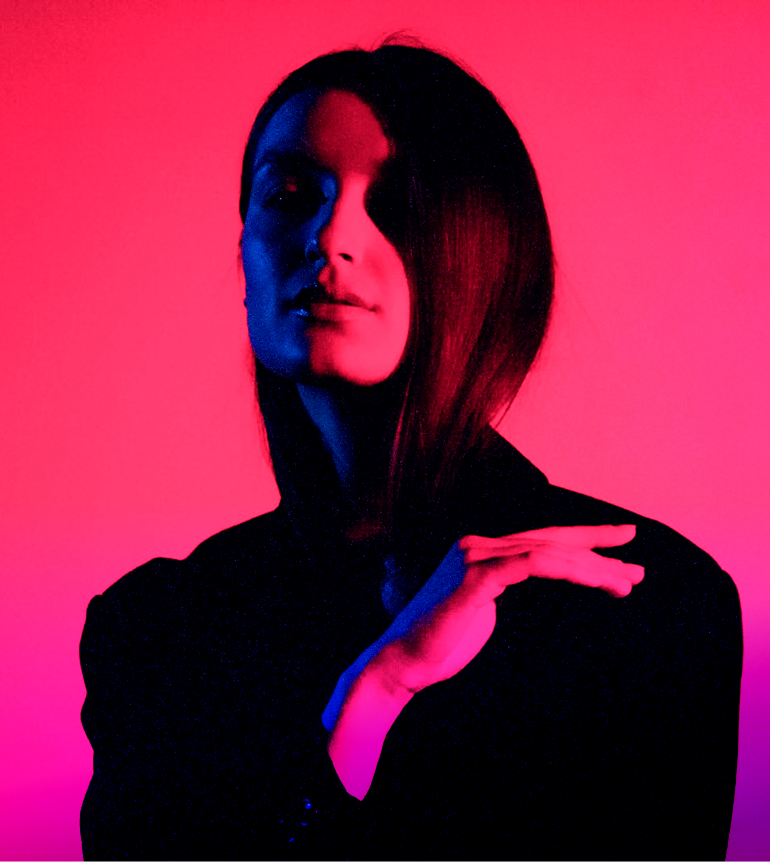Joshua Weidling, Influencer and Social Media Manager at Tiege Hanley joined Paul Kahn, SVP Sales at Upfluence for a conversation about the successful influencer marketing strategies employed at Tiege Hanley. In this Q&A, Joshua reveals the best approach to identifying, contacting, and compensating influencers for long-term influencer marketing campaigns.
Introduction to Tiege Hanley
Paul Kahn: Hello Josh, can you tell us a little about Tiege Hanley?
Joshua Weidling: Yeah. We have been a company for 5 years, we just had our anniversary this summer. I’ve been with the company for four and a half years.
Tiege Hanley makes it easy for guys to start and maintain a skincare routine, that’s our whole goal. We make it really, really easy. We make it easy to choose, start, and stick to [a skincare routine].
The company was co-founded by Alpha M. He is a big influencer on YouTube. He’s got just shy of 7 million subscribers. So influencer marketing is in the DNA of Tiege Hanley. It was a part of the initial go-live strategy from the get-go when the company launched five years ago.
Defining influencer marketing KPIs
Paul Kahn: At Tiege Hanley you are driving a lot of sales through your influencer world. Has that goal, and those KPIs changed, since the launch of the company? How does Tiege Hanley define the KPIs for success in their working with influencers?
Joshua Weidling: In general, it’s conversion-based, so sales are the main KPI. With influencer marketing goals, you’ve got awareness and direct response. For Tiege Hanley we’re definitely on the direct response side. We are looking for people to visit our website and buy products. If they don’t buy directly from the influencer then we want them to buy somewhere else in our marketing mix, whether it’s on a Facebook ad, an email, in Google search, whatever it may be.
That’s still our goal, but as you know, awareness can help inform what potential the influencer has on the direct response. So their engagement rate means they have a very highly engaged audience which can mean that they’re more optimized. And so you could use one side to inform the other.
Paul Kahn: Yeah. An important thing to always remember, for people who are just getting started, is that it’s hard to drive conversion right at the beginning until people have a sense of your brand and until the social proof exists. So, awareness is good for launches and campaigns of that nature.
But now we are really getting towards social commerce, really driving conversions and eventually loyalty. That should be how you’re thinking about influencer marketing as we’re moving forward.
Joshua Weidling: Yes, exactly. You know, a conversion doesn’t always mean a sale. For instance, a brand like Raid Shadow Legends, they’re a huge sponsor on a lot of YouTube content, and they’re looking for downloads. Now those downloads may lead to either advertising revenue or in-game expenses. So a conversion doesn’t always mean a money transaction right out of the gate.
Paul Kahn: Another thing to remember with those conversions is to set up your tracking ahead of time because otherwise, it’s all brand awareness.
Targeting the right audience through influencers
Paul Khan: Josh, I know that Tiege Hanley has a very specific target audience, right? You’re a men’s brand above all, is it right that we can’t expect a women’s line any time soon?
Joshua Weidling: Yes, we’re never going to have that. We’re a men’s brand through and through. We want to help men look and feel amazing. There are a lot of female brands out there that are serving that market very well. We think that we’re doing a great job to serve the men’s market. It’s so important to know who you’re targeting. It doesn’t matter how big that reach is, if it’s not the right reach it’s not going to help you. I mean it can help with awareness and it might be able to get you some people through word of mouth, but that’s a tougher thing to track, especially in knowing where it came from. But yeah, knowing your audience is huge.
Identifying the best influencers for your brand
Paul Kahn: When choosing influencers to work with you need to make sure that they have an interest in talking about the product you’re putting in front of them, right? Because if they don’t then their audience probably won’t be interested in them talking about it either. How does Tiege Hanley choose influencers that are aligned with the brand?
Joshua Weidling: Yeah, you need to make sure that influencer has some sort of connection to the product that is natural to them. So with skincare, it could be acne for example. If the person grew up with acne, they have probably dealt with other skincare brands or other skincare products before. Then of course when they use Tiege Hanley, and they’ve had great results, they can speak to that and just say, I’ve suffered from X, Y, and Z in the past, and this product helped me overcome that.
Paul Kahn: Speaking of identifying influencers, Josh I know you use Upfluence’s integration with Klaviyo to find influential customers in your database. Can you tell us about that?
Joshua Weidling: Yeah. Customers can be your best influencers, especially if they already have an audience which helps them to amplify trust in the brand. We use the integration with Klaviyo to do influencer matching which is very crucial. It’s something that Upfluence provides that many, many others do not, so, it’s a great tool.
Paul Kahn: Ok, so you then have to figure out your budget. Areas to consider include: what’s your budget? What are you hoping to accomplish? What products are you going to use and how are you going to compensate your influencers? How does Tiege Hanley approach these questions?
Joshua Weidling: Yeah, every influencer has their ‘F-You’ price, but some will be willing to make concessions for brands that they truly believe in. It’s important to make that connection with them out of the gate and to understand how your product aligns with what they’re doing.
Paul Kahn: Yeah, absolutely. So, how do you make somebody feel like you, your brand, can align with what they’re doing?
Joshua Weidling: It’s all about understanding who they are as a creator and what kind of content they’ve created in the past, and how they’ve talked about other brands in the past. All this can really inform how you speak with them.
Finding a piece of content that you latch onto, where you think ‘Hey, I could see my brand sponsoring this’ is key. You should mention that to the influencers because that just lets them know you’ve checked out their channel and it gives them a frame of reference to start working from.
We develop that personal connection out of the gate. You’ve got to let them know that you’re reaching out because you find their content interesting.
Selecting the right social media platforms for your product
Paul Kahn: So, Josh, I know Tiege Hanley are big believers in YouTube. Is that where you look for influencers?
Joshua Weidling: Yes. Skincare is a very visual product that needs to be explained, so YouTube videos tend to work better for us. But, if you’re a fashion brand for example then Instagram is probably gonna be your go-to. Fashion can be conveyed very effectively in a still image.
If you’re a product that needs explanation, you’re going to need more than a picture and a caption to explain it, or a 15-second story with a swipe up. That’s why YouTube is great for brands that need an explanation. They’re all over the place on YouTube. They’re also in podcasts a lot as well. But a great place to start is with a 60 to 90 second ad in a YouTube video.
Paul Kahn: This actually gets to a concept that we talk with our clients about, which is, information density, how much does someone need to understand before they’re ready to say ‘yeah, I want that’?
Fashion is the perfect example to use as a visual campaign on Instagram where you see a shirt, it looks good, you’re like ‘I want that shirt’. You can click ‘buy now’ and get the shirt. But a skincare regimen does not work that way.
I feel contractually obligated at this point to bring up the fact that in the future especially when men of Gen Z start aging into wrinklehood, I would imagine, some of that content is also going to go on to TikTok as well…
Outreach and onboarding your influencers
Paul Kahn: So Josh, how do you go about empowering the creators that work with Tiege Hanley to really put forward the type of content that you want them to publish?
Joshua Weidling: Yeah. So it’s all about understanding what they’re already doing. That’s the reason you’re reaching out to them in the first place. You don’t want to be caught fitting a square peg in a circle hole.
If you are reaching out to someone who creates lifestyle content like Alex Costa and Alpha M, let them create lifestyle content, let them create men’s advice content, cause that’s what they do. If you’re working with Kevin O’Leary, which we do and, if he goes out and creates a fashion video, that’d be left field for him because he creates financial advice content. In his case, we need to find a way to connect our product to financial advice content. At the end of the day, you have to let creators create. They are creators. They do this because they find it fulfilling. They do this because they’re good at it. And that’s how they built an audience.
You can help guide them through the process, but you can’t force it. Every influencer is different. If they are very open to your ideas and to working together in a more collaborative way, then you can have that collaborative relationship with them. But if they express that their content is sacred to them, don’t be caught making suggestions because it will turn them off. You might find a great influencer, and your left-field suggestions might turn off that influencer.
Paul Kahn: Yeah, offering guidance and approval are always interesting. There is that moment where you’re like, okay, wait, does this actually fit what I’m trying to do? But the best brands always manage to walk that line in a smart way and give the creators the right amount of space to make their best content.
Okay, now let’s talk about how we actually should do outreach and what the best practices are. One thing that’s interesting is that influencers don’t hide, Josh, I think you could agree with that, most of the time influencers who are open to collaboration, make it easy to find them.
Can you tell us a little bit about how you do influencer outreach and onboarding?
Joshua Weidling: Yeah, so we use a manual approach for quite a few of our reach outs. We find, especially for people that can be of very high value to the brand, and potentially be our largest influencers that we work with and have the longest-lasting relationships, that it’s worth that manual outreach. My goal isn’t to reach out to 10,000 people at a time. At times it’s just to get one person that I can then hopefully be paying to sponsor videos for the next few years. We know that those relationships are worth the manual outreach at times, but we have done scaled outreach as well.
In our outreach, we instantly try to communicate what our goals are. We’re trying to build trust. You have to establish your brand, and so if you’re experienced in influencer marketing, it’s pretty easy to do that because you can reference people that you’re sponsoring already, and you can reference how much content you’ve sponsored and say that you feel that they would be a great fit for your program.
But if you’re new to this, you’d start by communicating what you’re doing as a company, what you’re doing differently, and what your goals are as a company. There are so many influences out there, and there are ones that you should be willing to change up your strategy and make accommodations for, and really go the extra mile for. But most of them aren’t that. Remember that if it doesn’t sound like it’s going to work, if communication is difficult, or if you guys are having disagreements on a lot of things pertaining to the campaign, they’re just one of many fish in the sea. You should look at it that way, because otherwise, you’re going to end up in a contract, in a deal, that isn’t going to be advantageous for your brand. It’s just going to be a humongous suck of resources. It’s going to take so much of your time and you’re not going to get that benefit.
You’ve got to know how to spot red flags. You should know when someone’s going to be easy or hard to work with. Another red flag is spotting fake followers. Or whether the influencer breaks the content guidelines you have for the brand? You can see that in their content before you even reach out to them.
If they’re bridging topics that you don’t want them to bridge, then it sounds like you shouldn’t partner with them for any sponsored content. Just make sure that you’re aligned with them before going to that next step and doing the deal.
Paul Kahn: Yes, you’ve got to do your research, know the red flags, know what their content looks like, and be very clear on what your expectations are. One other thing I wanted to ask you about was how you brief your influencers? How do you coach them about expectations and dos and don’ts? You can’t outsource that, right? You need to make sure that you’re giving them what they need to say and do so that they feel like an expert on what they’re trying to sell.
Joshua Weidling: We provide our influencers with talking points that are meant to be very flexible. So if someone does want to read word for word there is an option for that, but if they are a person that likes to build their own ad reads, then we give them talking points that just guide them through that process. In that same document, we share do’s and don’ts. The do’s are the talking points, the don’ts are the things that I don’t want to be mentioned. If you have a certain value proposition for your brand and someone shares the wrong wording, that completely nullifies your value proposition. These details should be in your brief.
For example, Tiege Hanley provides affordable skincare products. We don’t like the word ‘cheap’ associated with our products because they aren’t cheap. But we are affordable compared to other luxury skincare brands. That is in our talking points. Being able to get on the same playing field as the influencer in the content creation process can really help you create that relationship and guide these deals through to fruition.
Paul Kahn: Some brands in our network are quite new. What’s the best outreach approach to get influencers to want to work with your brand if you’re just getting started?
Joshua Weidling: I would say, if you can afford it, put the product in their hands. That is one of the most compelling ways to get someone on board with what you’re doing, especially if it’s interesting, new, and different from what your competitors are doing. If you can afford to, send it to them, let the influencers know in that initial reach out that you’re willing to send them free products before there’s any sign of a deal, because that can help create the trust that comes before the deal.
Paul: Thank you Joshua for joining us for the discussion today!
Their conversation was originally part of a session at Connect:Collab:Create, An Upfluence virtual event held on 22nd September 2021. Watch the full replay of the webinar.
























